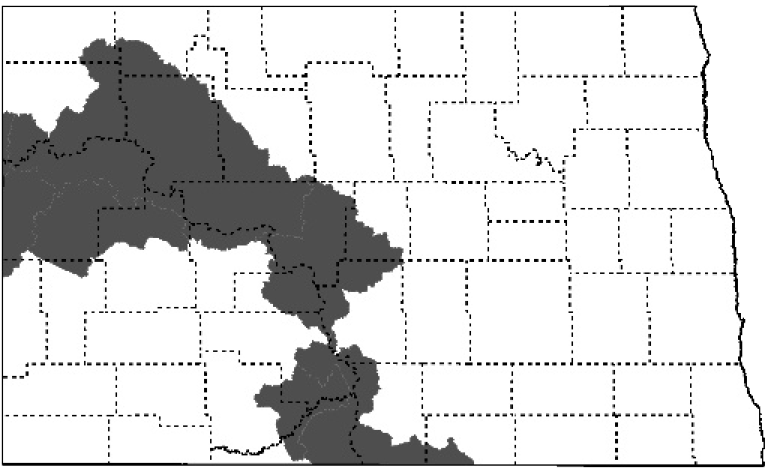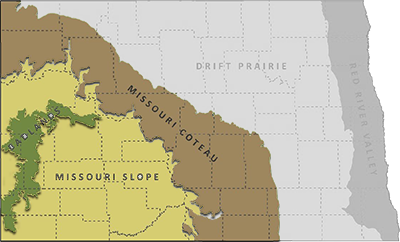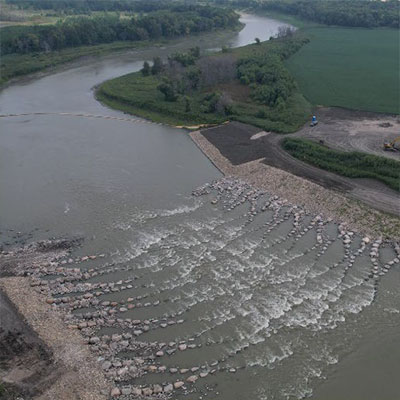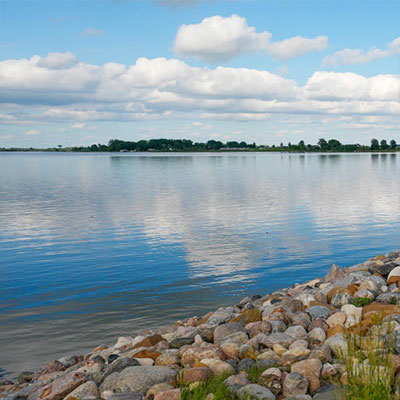Paddlefish
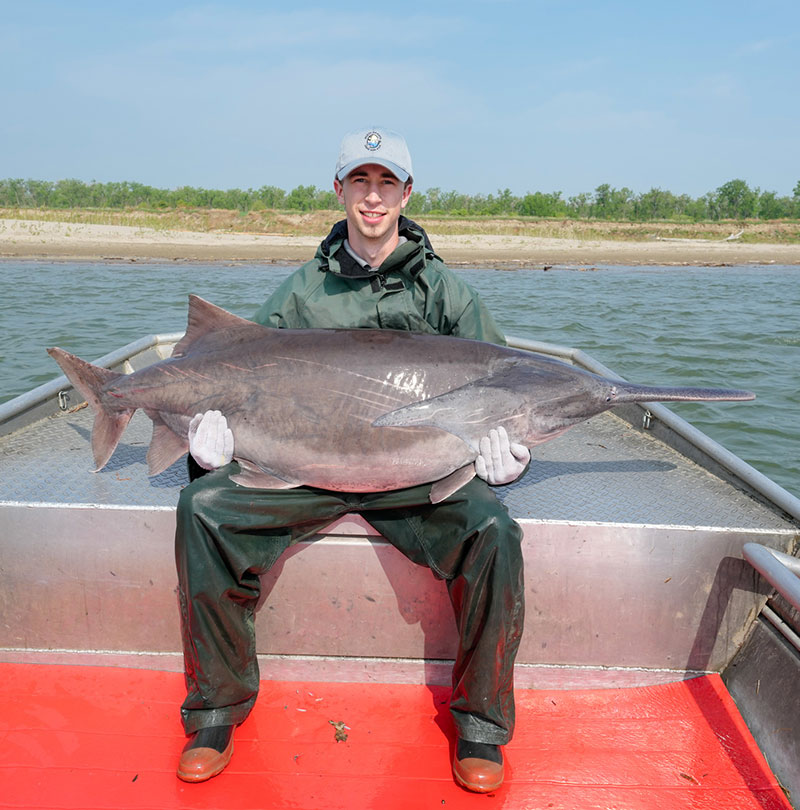
NDGF
Can grow seven feet in length and weigh over 100 pounds. Large paddle-shaped snout. Smooth skin has no scales. Color ranges from blue gray to nearly black with a lighter underside. Long fleshy gill covers.
Status in North Dakota
Year-round resident.
Reason for SWAP Designation
Loss of river habitat due to channelization and impoundment has caused decline in this species with the state and range wide.
Threats
Impoundments along the Missouri River System have changed the flow regime of the river and cover needed for spawning habitat.
Slower flows have allowed silt to cover important gravel beds, making them unusable by spawning fish.
As a result, reproduction only occurs in the wild when conditions are favorable in the Yellowstone River.
Dams have also impeded the movement of fish throughout the system, separating populations.
This brings up concerns about genetic integrity.
Over-harvest for the fishes’ valuable roe is a concern for this species.
The North Dakota Game and Fish Department regulates a controlled harvest for Paddlefish as a sport fish.
Research and Monitoring
- Currently populations within the Missouri River system are being monitored by use of information obtained from harvested fish and tagging studies. Age, growth rates, and sexual structure of the population are being documented.
- Young-of-the-year surveys are conducted annually on the upper end of Lake Sakakawea.
Management Recommendations
- Protect rivers, streams, and riparian areas where possible (i.e. easements and/or acquisition).
- Work with partners to ensure Swampbuster provisions are maintained.
- Continue to use the Section 404 program to ensure affected rivers and riparian areas are mitigated to replace form and function.
- Continue to work with other federal agencies (i.e. FAA and FHWA) not covered by Section 404 or Swampbuster to ensure affected rivers and riparian areas are mitigated to replace form and function.
- Continue to work with NDSWC to develop minimum in-stream flow recommendations.
- Develop and promote incentive programs to restore riparian areas.
- Continue to work with ND 319 Task Force in prioritizing projects within impaired watersheds and implementing BMP’s.
- Develop and promote incentive programs for adjacent landowners to improve bank stability through land use changes (e.g. RRBRP).
- Promote non-traditional bank stabilization measures (i.e. root wads, willow waddles, vegetative slope).
- Implement intake conditions or recommendations (i.e. screening and velocity requirements).
- Work with the dam owners for potential removal or modification.
- Cooperate with Fisheries Division on state aquatic nuisance species plan.
- Survey areas of data gaps. Conduct research/surveys to establish baseline information on SCP.
- Continue to work with partners in promoting and distributing educational materials related to river, stream and riparian values and good stewardship.

